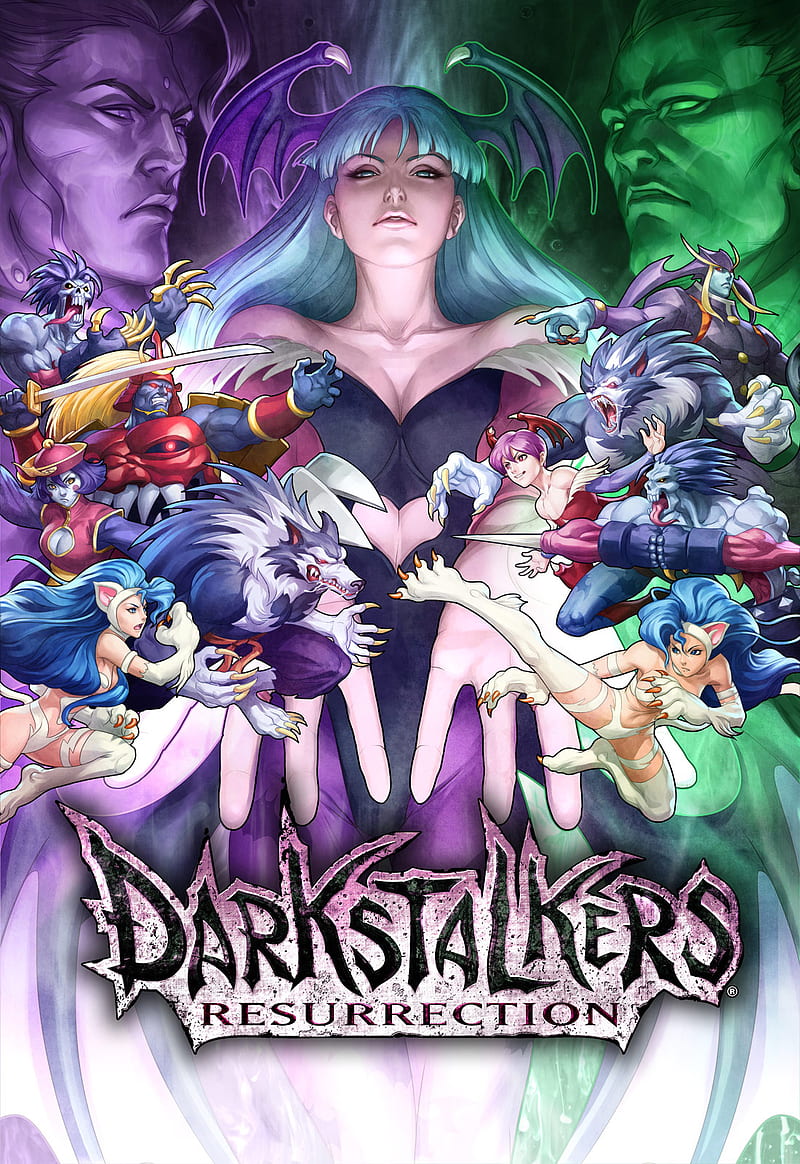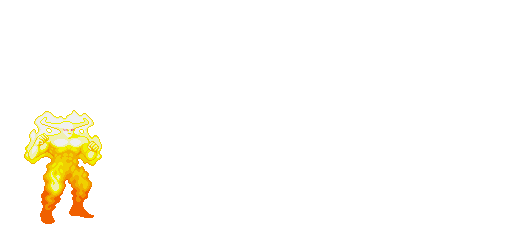
Darkstalkers, known in Japan as Vampire (ヴァンパイア), is a gothic-themed fighting game series and multimedia franchise developed by Capcom. First released during the 1990s fighting game boom, it stood out from its martial arts-focused contemporaries by featuring a cast inspired by classic monsters and creatures from global folklore. Vampires, werewolves, succubi, mummies, and other supernatural beings come to life in a stylized 2D art style rich with fluid animation and grotesque charm.
The first title, Darkstalkers: The Night Warriors, debuted in arcades in 1994. It was followed by Night Warriors: Darkstalkers’ Revenge in 1995 and culminated with Darkstalkers 3 (Vampire Savior: The Lord of Vampire) in 1997. Two additional upgrades, Vampire Hunter 2 and Vampire Savior 2, were released exclusively in Japan that same year, rounding out the main arcade series.
Setting & Story
Darkstalkers takes place on Earth as it begins merging with a dark parallel realm known as Makai. This fusion brings supernatural beings, collectively referred to as “Darkstalkers”, into the human world. Each entry in the series introduces new threats:
• In The Night Warriors and Darkstalkers’ Revenge, the alien overlord Pyron returns to Earth to conquer it using a robotic army. The emergence of Darkstalkers disrupts his plans.
• In Darkstalkers 3, Makai noble Jedah seeks to save the collapsing demon realm by remaking it in his image, using the souls of the strongest beings, including the Darkstalkers themselves.
The games’ characters are either homages to classic literary and film monsters, such as Dracula, the Mummy, Frankenstein’s Monster, the Wolf Man, and the Creature from the Black Lagoon, or inspired by mythologies and fairy tales from around the world.
Gameplay & Innovations
Darkstalkers was Capcom’s second major fighting game franchise after Street Fighter, and it shares many of the same mechanics, including a six-button control scheme and character archetypes. As such, GamePro famously dubbed it “Street Fighter in a Halloween costume.”
However, Darkstalkers pioneered several now-standard features in fighting games:
• Super Moves
• Air Blocking
• Chain Combos
• Multiple character variants, similar to Hyper Street Fighter II
Its fast-paced combat, exaggerated animations, and colorful cast gave it a distinctive identity. The series is also known for its unapologetic fanservice, particularly through characters like Morrigan Aensland and Felicia, whose provocative designs became icons of 90s gaming. Morrigan’s sprite was so frequently reused that it became infamous for clashing with updated visuals in crossover games, until she finally received new models in Tatsunoko vs. Capcom, Marvel vs. Capcom 3, and Project × Zone.
Main Game Releases
Arcade & Console Titles
• Darkstalkers: The Night Warriors (Vampire) – 1994 (Arcade, PlayStation)
• Night Warriors: Darkstalkers’ Revenge (Vampire Hunter) – 1995 (Arcade, Sega Saturn)
• Darkstalkers 3 (Vampire Savior: The Lord of Vampire) – 1997 (Arcade, PlayStation, Sega Saturn JP)
• Vampire Hunter 2 / Vampire Savior 2 – 1997 (Arcade JP only) – Alternate versions with roster changes and system tweaks
Re-releases & Compilations
• Vampire Savior: EX Edition (1998, PS1) – Combines characters from Vampire Savior, Vampire Savior 2, and Vampire Hunter 2
• Vampire Chronicle for Matching Service (2000, Dreamcast JP) – Allows players to choose character variants from all previous entries
• Darkstalkers Chronicle: The Chaos Tower (2005, PSP) – Portable version of Chronicle with extra modes
• Vampire: Darkstalkers Collection (2005, PS2 JP) – Complete anthology of all five arcade games
• Darkstalkers Resurrection (2013, PS3/Xbox 360) – HD re-release of Vampire Hunter and Vampire Savior with online play
• Capcom Fighting Collection (2022, PS4/Xbox One/Switch/PC) – Includes all five arcade Darkstalkers titles plus five other Capcom fighters. This marked the first global release of Vampire Hunter 2 and Vampire Savior 2, and the first appearance of the series on a Nintendo console
Attempts at Revival
Capcom has teased a revival for years. In 2007, producer Yoshinori Ono expressed his desire to resurrect the franchise, stating it would require massive fan demand, joking that one million requests were needed. By 2011, Capcom had received over 100,000.
At San Diego Comic-Con 2011, Ono famously rallied fans with the phrase: “Darkstalkers are not dead!”, encouraging fans to demonstrate their support. In 2012, Darkstalkers Resurrection was revealed, with Capcom positioning it as a test to gauge interest in a full sequel.
However, despite strong reviews, Resurrection underperformed commercially. Capcom later stated the franchise was back on hold, though they continued including Darkstalkers characters in crossover titles like Project × Zone 2, Marvel vs. Capcom, and Street Fighter vs. Darkstalkers.
The 2022 release of the Capcom Fighting Collection reignited fan hopes, though the project’s producer clarified that it wasn’t being used to test demand for a new game. Nevertheless, Capcom has publicly expressed interest in reviving dormant IPs, Darkstalkers included, following the success of Marvel vs. Capcom: Infinite.
Other Media
Animation
• Night Warriors: Darkstalkers’ Revenge (1997) – A four-episode OVA faithful to the games
• Darkstalkers (1995) – A western animated series that heavily altered character personalities and lore
Manga & Comics
• Vampire: Shuumatsu no Shisha – A two-volume manga centered on Victor and Emily, known for creative liberties
• Vampire Hunter: Darkstalkers’ Revenge – Manga by Run Ishida, localized as Night Warriors: The Comic Series
• Vampire Savior: Tamashii no Mayoigo – A five-volume manga starring Lilith, following her existential journey during Jedah’s tournament
• Street Fighter vs. Darkstalkers – An 8-issue crossover comic from UDON Entertainment
• Darkstalkers: Maleficarum – A crossover manga with Red Earth
• Darkstalkers: The Night Warriors – A 25-issue Chinese manhua focusing on Demitri, Felicia, Jon Talbain, and Morrigan









